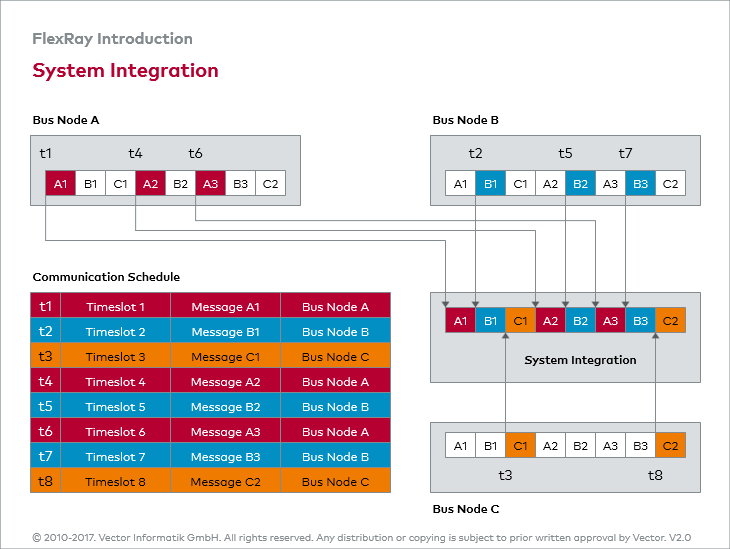Composability
The growing interplay between electronic systems and replacement of mechanical components by electronic components heightens the complexity of automotive electronic systems, which causes the increasing time and cost demands for tests and system integration. Relief is offered by architectures that exhibit the property of composability.
Composable communication architectures make it possible to make changes to the functionality of one ECU without affecting the functionality of other ECUs or the total system. This means that when a new system component is integrated, it is not necessary to test the entire system, since it is sufficient to keep reliability by testing the individual system components exclusively.
A prerequisite for a composable communication architecture is a schedule, which comprises a number of consecutive time slots, each of which is assigned to an individual bus node. A specific message is assigned to each time slot and is marked by a clearly defined starting point and ending point.
An illustrative communication schedule including its system integration is shown in the figure “System Integration”. Forming the basis for the communication schedule is a communication system composed of bus nodes A, B and C. As can be seen in the figure, in system integration the communication sequence defined in the communication schedule can be reproduced precisely, provided that manufacturers of the bus nodes conform to the specified communication schedule.

